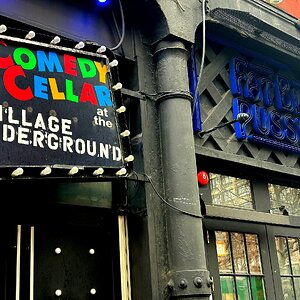pgriz
Been spending a lot of time on here!
- Joined
- Jul 30, 2010
- Messages
- 6,734
- Reaction score
- 3,221
- Location
- Canada
- Can others edit my Photos
- Photos OK to edit
The business issue is to find the right niche where:
1) Your clients are willing to pay what you need to charge
2) Your skills are adequate to deliver what your clients are willing to buy
3) Your competitors cannot take away the reason your clients are buying from you.
JerryVens makes some very good points in terms of having those issued defined in your business plan.
KmH as usual has some excellent links for providing the background to your question.
Of course, assuming you've found an appropriate niche, also know that it will constantly be changing due to demographics, competition, and styles/fashions. So really knowing what your clients want becomes the way you stay in business. Every business I've been in (and I've been in business for more than 40 years), has had major parts of its revenue stream change on the time-scale of 2-4 years (of course, some sectors change more slowly than others). So being nimble and constantly adjusting your pricing/marketing/product delivery strategy is the way you succeed.
1) Your clients are willing to pay what you need to charge
2) Your skills are adequate to deliver what your clients are willing to buy
3) Your competitors cannot take away the reason your clients are buying from you.
JerryVens makes some very good points in terms of having those issued defined in your business plan.
KmH as usual has some excellent links for providing the background to your question.
Of course, assuming you've found an appropriate niche, also know that it will constantly be changing due to demographics, competition, and styles/fashions. So really knowing what your clients want becomes the way you stay in business. Every business I've been in (and I've been in business for more than 40 years), has had major parts of its revenue stream change on the time-scale of 2-4 years (of course, some sectors change more slowly than others). So being nimble and constantly adjusting your pricing/marketing/product delivery strategy is the way you succeed.


![[No title]](/data/xfmg/thumbnail/30/30995-7e48e5498fe9a56ea3d405cf87f3a1ec.jpg?1619734558)


![[No title]](/data/xfmg/thumbnail/32/32944-550374cc056b8618b47594b3cc6e1574.jpg?1619735777)


![[No title]](/data/xfmg/thumbnail/37/37627-c3d3ca879cdfbdb9e35acdcc7fcd4b3e.jpg?1619738154)
![[No title]](/data/xfmg/thumbnail/32/32943-1a3c3a399438cf2fc6a21415e9bdedcf.jpg?1619735775)
![[No title]](/data/xfmg/thumbnail/1/1592-cfae4a7ea791f96c6e2d03484be2e454.jpg?1619729144)